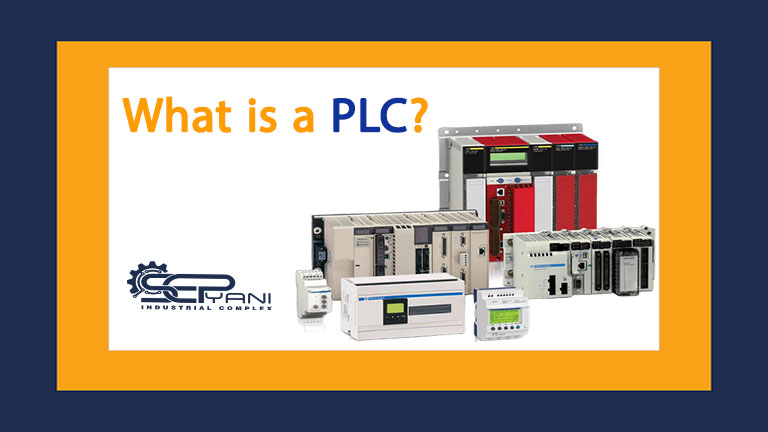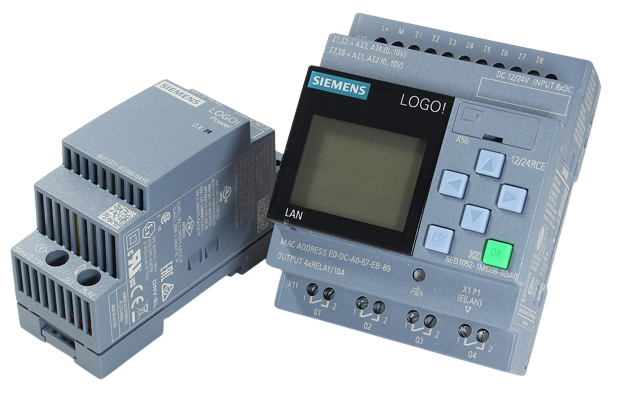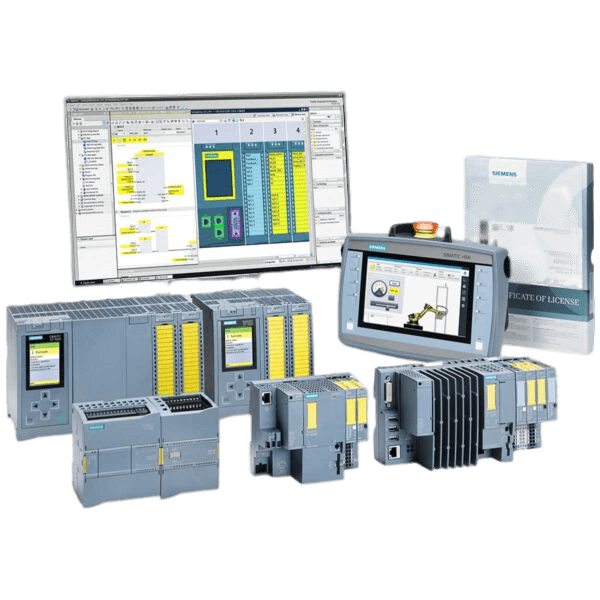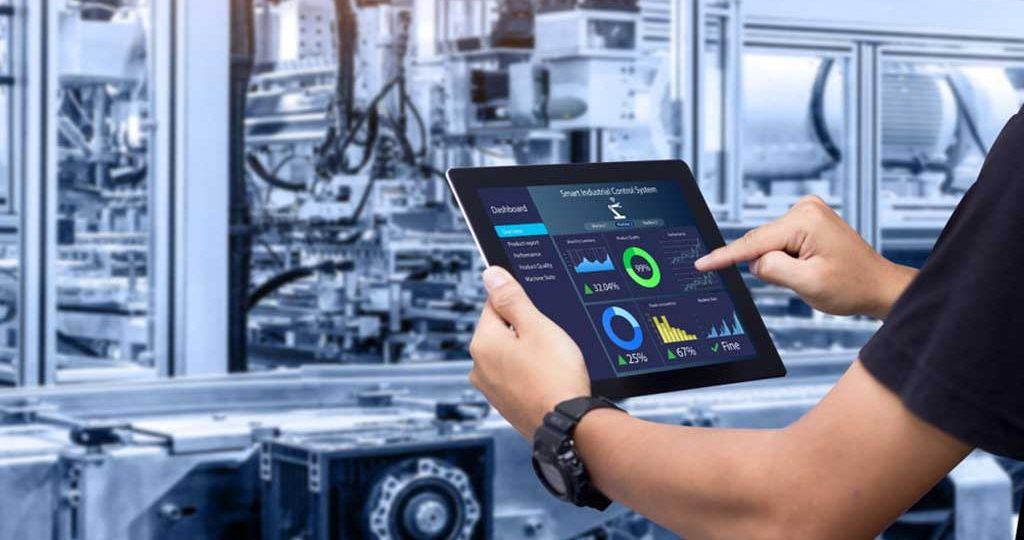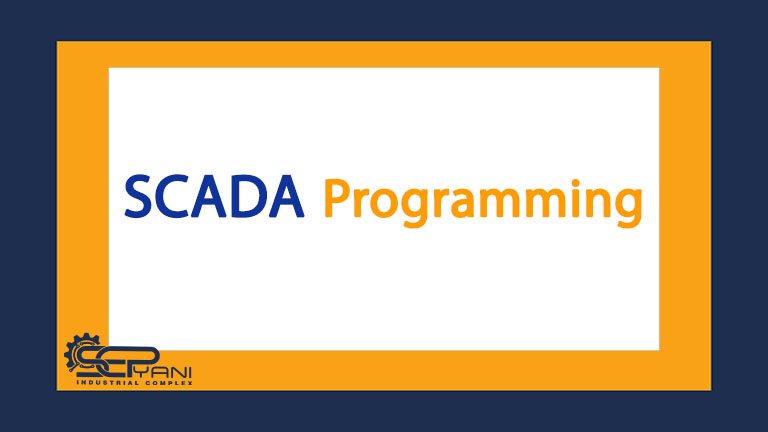What is PLC?
PLC stands for “Programmable Logic Controller” or programmable logic controllers. The PLC is specially designed for reliable operation in industrial environments (e.g. working in high temperatures, humidity, dry or dusty conditions). PLC is used for the automation of industrial processes such as assembly lines in manufacturing plants, ore processing plants or wastewater treatment plants.
What is Industrial Automation?
Difference between PLC and Personal Computer (PC):
A PLC has many of the functions of a PC you have at home! All of them have a power supply, CPU (central processing unit), input and output (I/O), memory and operating software. The biggest difference is that PLC can perform discrete and continuous functions that cannot be performed by computer. According to what was mentioned, PLC is more suitable for industrial environments. A PLC can be thought of as a “powerful” digital computer that manages electro-mechanical processes in an industrial environment.
The role of PLC in the field of automation:
PLC is an integral part of large-scale SCADA system and plays a vital role in automation. The PLC can be programmed according to the operational needs of the process. In the production process, due to the change in the nature of the process, there may be a need for re-planning. In order to overcome this problem, a PLC-based control system was introduced in the industry. Before introducing the various applications of PLC, we will first discuss the history of PLC.
History of PLC:
PLC was invented by Dick Morley in 1964. Since then the PLC has completely changed the industry and manufacturing. PLC has various functions such as timing, counting, calculating, comparing and processing various analog signals. Compared to the “hardware by wire” control system, the main advantage of PLC is that you can change its program after programming it and replace the previous program. This work is done with a very small cost (only programming time included). In a hard-wired control system, you basically have to rip the wires apart and start over (this is more expensive and takes more time). Let us give an example to better understand this advantage.
An example example of PLC application:
Imagine you have connected the light bulb to the switch. Usually, the lamp works in two modes, on and off. For example, when you turn on the switch, the indicated lamp should turn on after 30 seconds. With this hardware setup by wire, we are in trouble. The only way to achieve this is to completely reroute the circuit to add a timer relay, and making minor changes is problematic.
This is where the PLC comes in without the extra wiring and hardware to ensure changes are made. Instead simple code changes are required to program the PLC to turn on the lamp only 30 seconds after the switch is turned on. So by using PLC you can easily combine multiple inputs and outputs. This is just a simple example of how a PLC can control larger and more complex processes. PLC can be customized according to application and user needs.
PLC types:
The two main types of PLC are:
1. Compact PLC
In a single case, there will be many modules. It has a fixed number of I/O modules and external I/O cards. Therefore, it does not have the ability to expand the module. Each input and output is determined by the manufacturer.
2. Modular PLC
This type of PLC allows for multiple expansions through “modules”. For this reason, it is also called PLC module because components can be added to it. Since each component is independent from other components, it is easier to use. According to the output of the PLC module, the PLC outputs are divided into three parts: relay output, transistor output, and triac output. Relay output type is most suitable for AC and DC output devices. Transistor output PLC uses the switch function and is used inside the microprocessor. It should be noted that according to the physical size, PLC is divided into micro and nano.
Some PLC manufacturers are:
- Alan Bradley
- ABB
- Siemens
- Mitsubishi Mitsubishi
- Hitachi Hitachi
- Delta Delta
- General Electric (GE)
- Honeywell Honeywell
Main components of PLC
Power supply:
It supplies the various components of a PLC with DC voltage. For this purpose, the power supply converts the AC voltage (eg 120V) to a lower DC voltage (eg 24V).
Processor:
A solid state device that performs industrial control functions in a manufacturing environment (such as a production line, machine tool, or robotic device) as well as other process control functions.
Input/output :(I/O)
A PLC consists of various input and output modules. Input modules detect the status of input signals from various sources such as buttons, switches and various sensors. On the other hand, output modules are made to control devices such as relays and lights.
Two main types of input:
Data inputs from devices and machines and data inputs created (transformed) by human agents. Input data from sensors and machines are sent to the PLC. Inputs can include on/off states for things like mechanical switches, thumb sticks, and encoders. HIGH/LOW states are for factors such as temperature, pressure sensors, and liquid level detectors, or OPEN/CLOSE states are for actuators such as pumps.
Human-given inputs include pressing buttons, switches, sensors on devices such as keyboards, touch screens, remote controls, or card readers. Outputs are the physical actions or visual results that are generated based on the logic of the PLC in response to those inputs. Physical outputs include starting motors, turning on lights, emptying valves, heating or turning off pumps. Visual outputs are sent to devices such as printers, projectors, GPS or displays.
SCADA and HMI systems enable users to view data from the production area and provide an interface for users to provide control inputs. PLCs are an essential hardware element in these systems.
Differences between PLC and DCS
PLC functions:
PLC functions are divided into three categories:
- Input
- Output
- CPU
PLCs take data from the production department of a factory by monitoring the inputs to which machines and devices are connected. The input data is then processed by the CPU, which applies logic to the data based on the state of the input. Then the CPU executes the program logic created by the user and sends data or commands to the machines and devices connected to them as output.
PLCs act as a physical interface between devices in a factory or manufacturing department and a SCADA or HMI system. PLCs connect, monitor and control automated processes such as assembly lines, machine operation or robotic devices.
PLC communication modules and protocols:
PLC communication modules facilitate the transfer of digital data between the PLC and other industrial site devices. To implement this transfer, communication modules implement one or more protocols, including wired and wireless protocols. Industrial protocols used by PLCs include EtherNet/IP, Profibus, Modbus, Interbus, ProfiNet, etc. PLC communication is done through the device’s internal ports such as USB (Universal Serial Bus), Ethernet, RS-232, RS-485 and RS-422 ports. Using these ports, PLCs communicate with software systems, external devices (such as sensors, actuators) as well as other control systems such as SCADA.
How does PLC work?
How the PLC works can be understood through the scan cycle process. The PLC scanning process includes the following steps:
- The operating system starts the scan and monitors its time.
- The CPU starts reading data from the input module and checks the status of all inputs.
- CPU executes user programs or programs written in ladder logic or any other PLC programming language.
- Then the CPU performs internal troubleshooting and communication tasks.
- This process will continue as long as the PLC is running.
Redundancy
PLC provides a kind of redundancy in the industrial context. Specifically, redundancy refers to an auxiliary PLC system that replaces the primary system in cases where the primary system fails. PLCs implement a heartbeat mechanism to detect when the auxiliary system should be activated.
PLC programs
A key element of a PLC device is its control logic, which is programmed and reflected in specialized languages for industrial automation and electrical systems, such as ladder diagrams and functional block diagrams.
PLC programming languages
The IEC (International Electrotechnical Commission) standard allows some basic rules to standardize the PLC and its language. According to IEC 61131-3, only 5 languages are considered as standard languages used in PLCs.
The most popular PLC programming languages include the following:
- Ladder Diagram (LD)
- Sequential Function Chart (SFC)
- Functional block diagram (FBD)
- Structured text (ST)
- Instruction list (IL)
Advantages:
1. Longer life and reliability: The probability of failure and damage of these devices is very low because there are very few moving mechanisms in it.
2. Economical: Since the probability of failure or failure of PLCs is very low, it can be considered as a one-time investment. In this way, PLC is undoubtedly the most economical system. The cost of PLC is recouped in the short term.
3. Energy saving: the average power consumption is only 1.10 of the power consumed by the relays.
4. Easy maintenance:
Ability to detect errors
Easy replacement of modules
Easy troubleshooting
5. High flexibility: No need to rewire if you need to make any changes. It can perform complex functions such as arithmetic operations, counting, comparing, delaying, etc.
6. Speed: It has more processing speed and flexibility in analog and digital processing. You can also do “online” / “offline” programming.
7. Reduced project time: The structure and wiring of the PLC has nothing to do with the definition of the control program. Its programs are easy to save and archive because it is compatible with PC-ATs, printers and floppy disks.
8. Reduced space: reducing the volume of wiring compared to the mode of control by relays
Using the experience and knowledge of expert engineers in the field of industrial automation, Sepyani Industrial Group is at your service by providing appropriate and cost-effective technical advice and solutions, as well as implementing and installing all industrial automation matters, a small contribution to the advancement of the industry. you have To get a free consultation, you can complete the consultation request form so that our engineers will contact you as soon as possible.

